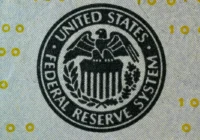Events this year have helped to clarify thinking about how the Global South and more particularly, BRICS+ as its spokesperson, expects to position itself with regard to the US dollar. A consensus seems to be developing that rather than going to war against the dollar’s established position as the world’s premium reserve currency, nations across the globe are looking at diversifying the means and methods of payment so as not to be subject to every change of political mood coming from Washington.
Undoubtedly, we will learn more about how this will be done, by whom and with which instruments in the course of 2025. For the moment, the world has been put in a state of prolonged suspense as it waits for clarity about the policies the new Trump administration will put in place after January 20. That suspense is at the same time punctuated by political crises galore and notably in Germany, France and, more astonishingly, South Korea. Hanging over everything, and especially Europe, is the question of how – as well as if –the Ukraine war will be resolved, since Trump has promised to deliver a rapid solution.
In November Alex, reflecting on the choices BRICS nations may be tempted by offered some data as well as insight on the question of the role gold might play in an evolving marketplace.
On November 5, 2024, the Russian Ministry of Finance announced an increase in daily purchases of “currency / gold” to 4.2 billion rubles. At the current exchange rate, this amounts to roughly $43 million. At current gold prices, a tonne of gold costs $85 million. Russia could therefore be purchasing half a tonne of gold per day, which might explain the constant bid under the gold price throughout 2024.
However, Russia has its own mines – it is the second largest gold producer in the world with 322 tonnes annually, trumped only by China (378 tonnes). The Ministry of Finance could therefore purchase half of the domestic gold production, still leaving the other half for industrial applications. Purchases of foreign currencies are tricky for Russia since they have been cut off from SWIFT (international payment messaging system). Many banks refrain from doing business with Russia for fear of secondary sanctions.
Another explanation could be Russia being ‘forced’ to accumulate foreign currencies. As Russian oil is sold to India, Indian Rupees are used to settle the trade. Russia might have no choice but to accumulate Rupees, as selling them in the foreign exchange market might increase pressure on the exchange rate and upset Russia’s important customer.
Russia officially holds 2,335 tonnes of gold, worth approximately $200 billion. Russia’s Gross Domestic Product (GDP) is estimated around $2 trillion. Its gold reserves currently equal 10% of GDP.
The amount of money changing hands in developed economies is staggering. Both TARGET2 (Euro-zone) and FedWire (USA) settle payments worth the entire annual production every week.
If the BRICS wanted to introduce a gold-backed currency, a lot of gold would be needed to ensure a smooth functioning of the payment system. The gold-backing would not have to be 100%, and the gold would not have to move with payments, but the amount of gold available would have to be substantial for the gold-backing to be credible.
In this context, on December 2, Edward Quince offered some insight into what’s starting to become visible from the China side of BRICS.
Some rough numbers here, nothing too polished, but a rough sketch of the implications and some strategic thinking that may be taking place.
The two BRICS countries with an excessive exposure to the US are India and China, both with roughly 16-17% of their total exports to the USA. Chinese exports are worth roughly $550bn, and India – abt $80bn.
If these trade adversaries (can’t call them partners anymore, can we?) decide to let Mr. Trump do as he wishes with his tariffs, is there a viable and readily available pool of domestic suppliers who can fill in the gaps?
Assuming that this 100% tariff rate cuts China off from the US market completely and there’s no market for any of those goods and services elsewhere, the NPV of not complying with American demands for China is a net loss $5.5-30 trillion depending on the cost of money and growth expectations. That’s roughly twice the size of China’s current annual GDP on the high end of the range. For scale, US current debt is $36 trillion.
Ostensibly, 100% import tariffs are not a deterrent for China if the net gain of undollaring is much more than $30 trillion. Here’s my back of the envelope calculation (very crude of course, just to get a ballpark idea of what’s at stake): take US GDP, discount it at current cost of capital and assume that half of that amount would be done in currencies other than USD, i.e. the greenback will lose 50% of its current share of trade: $27.72T/4.28%×0.5=$324T.
So very simple math reveals that even if alternative currencies can take 5% of the US dollar’s share in the long run at the cost of not having any access to the American market, the upside makes it worth doing even for China.
This gives us an idea of what Trump’s team should be thinking about. But we have to ask ourselves if they are truly aware of this logic. Since Trump’s election, every pundit and most informed citizens are speculating about which of his campaign promises and boast he will attempt to put into practice and what the consequences might be, especially for Americans. We mustn’t discount the fact that politicians who are well aware of the long-term logic of their policies still act exclusively on the basis of short-term electoral logic. For decades, this has become the pattern for crafting foreign policy by all US administrations, with the result of an endless series of expensive but fruitless wars.
The logical conclusion on that score is that most of the Beltway establishment is convinced that the best way to preserve the hegemony of “the indispensable nation” is to ensure that the rest of the world is in a permanent state of chaos. From my own European perspective, I can attest to the efficacy of such an attitude as it affects Washington’s closest allies, whose economies are in a tailspin and its political leadership has proven itself bankrupt. Just as an example, my own country, France, is without a government since 10 am today.
One last note to keep the roulette wheel spinning: as I’m writing this the price of bitcoin has reached $103,600. A reason cited by some is the perceived friendliness to crypto of certain members of Trump’s team. This includes the anticipated approval of spot Bitcoin ETFs. Bitcoin is perceived by others as a hedge against inflation and geopolitical uncertainties.
We will continue to follow the evolution of all these factors as today’s dramatic episodes continue to develop.
Join the debate
Money Matters…, is dedicated to developing this discussion and involving all interested parties.
We invite all of you who have something to contribute to send us your reflections at dialogue@fairobserver.com. We will integrate your insights into the ongoing debate. We will publish them as articles or as part of the ongoing dialogue.
*[Fair Observer’s “Crucible of Collaboration” is meant to be a space in which multiple voices can be heard, comparing and contrasting their opinions and insights in the interest of deepening and broadening our understanding of complex topics.]
The views expressed in this article are the author’s own and do not necessarily reflect Fair Observer’s editorial policy.
Support Fair Observer
We rely on your support for our independence, diversity and quality.
For more than 10 years, Fair Observer has been free, fair and independent. No billionaire owns us, no advertisers control us. We are a reader-supported nonprofit. Unlike many other publications, we keep our content free for readers regardless of where they live or whether they can afford to pay. We have no paywalls and no ads.
In the post-truth era of fake news, echo chambers and filter bubbles, we publish a plurality of perspectives from around the world. Anyone can publish with us, but everyone goes through a rigorous editorial process. So, you get fact-checked, well-reasoned content instead of noise.
We publish 2,500+ voices from 90+ countries. We also conduct education and training programs
on subjects ranging from digital media and journalism to writing and critical thinking. This
doesn’t come cheap. Servers, editors, trainers and web developers cost
money.
Please consider supporting us on a regular basis as a recurring donor or a
sustaining member.
Will you support FO’s journalism?
We rely on your support for our independence, diversity and quality.







Comment